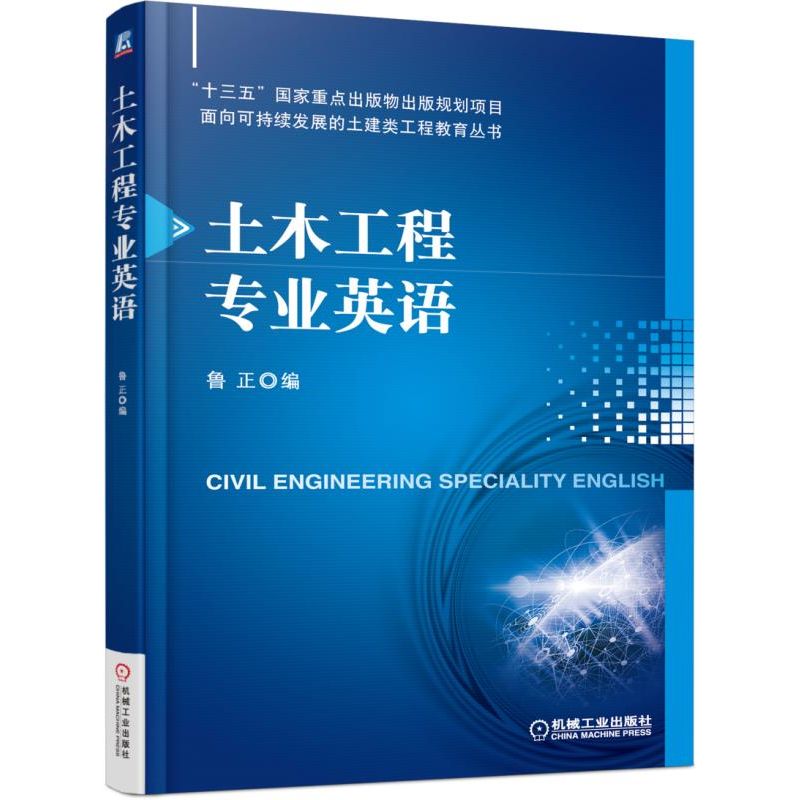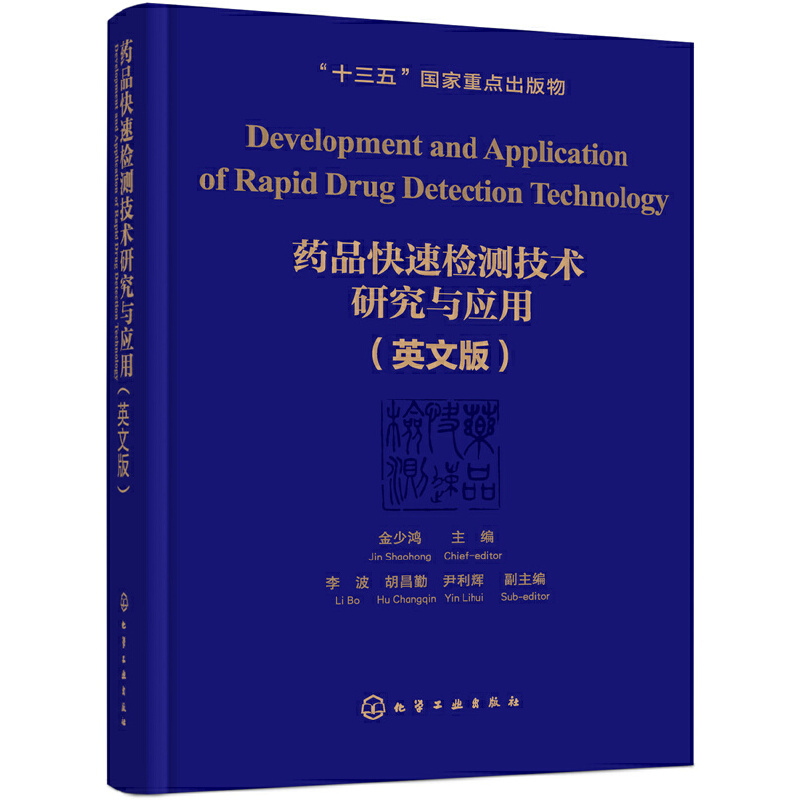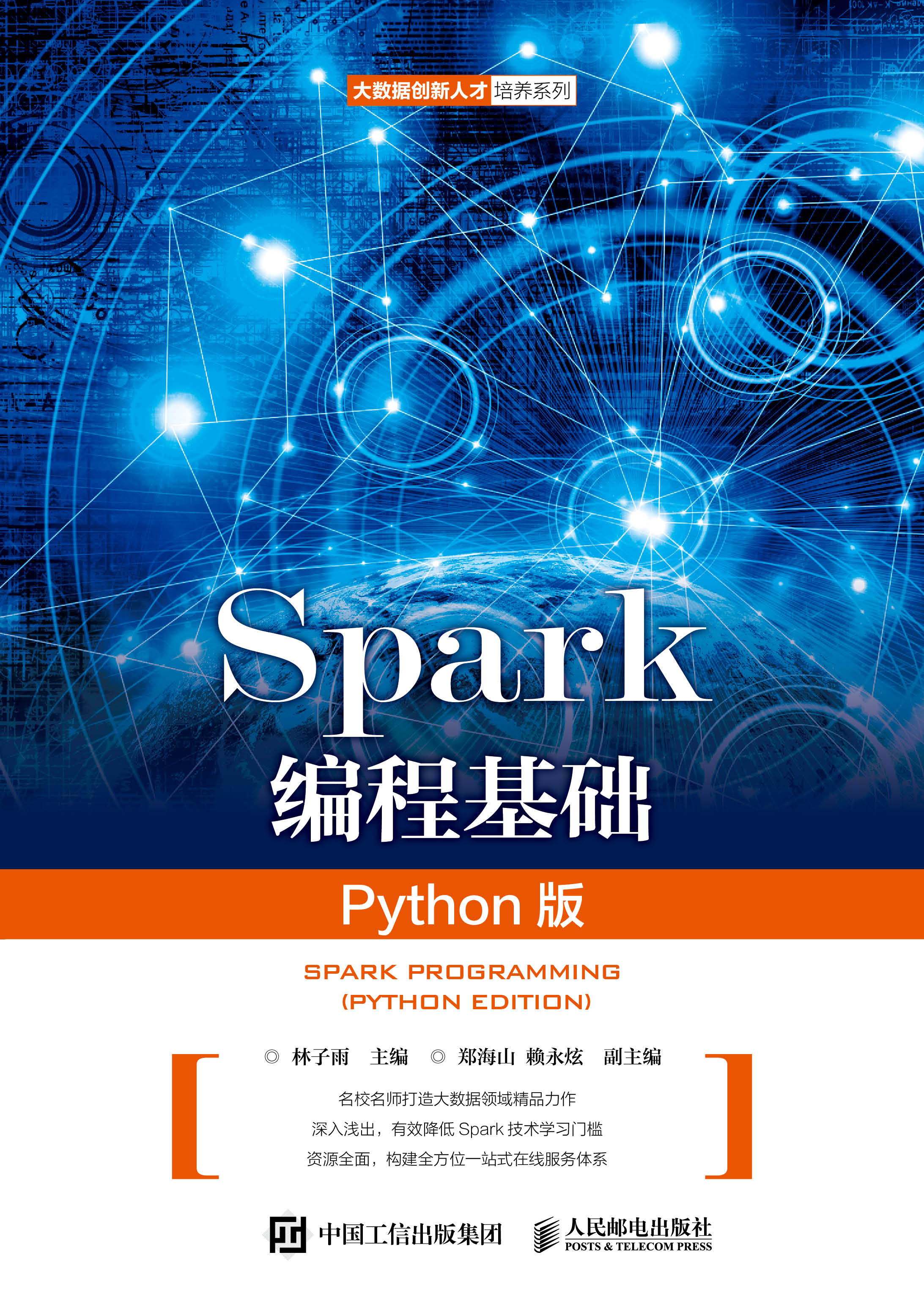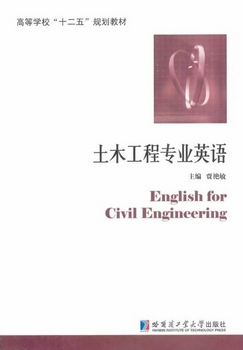物流英语(第2版) / 高等院校物流专业“互联网+”创新规划教材
定价:¥49.00
作者: 阚功俭,张媛媛主编
出版时间:2024-08
最新印次日期:2024-9
出版社:北京大学出版社
- 北京大学出版社
- 9787301353646
- 2版
- 547701
- 42265179-4
- 16开
- 2024-08
- 管理学
- 物流管理与工程类
- 物流管理
- 本科
作者简介
内容简介
本书共分为8 章,分别从物流管理简介、供应链管理、采购和供应商管理、仓储和配送管理、运输管理、供应链中的信息技术、国际物流、合同和运输单证几个方面进行讲解,力求通过对物流理论知识的介绍,以及对相关案例的解析来提高读者的物流专业英语阅读能力,同时通过物流运作中的单证往来和信息传递等内容的讲解提高读者的物流专业英语实际应用能力和创新思维能力。本书在每章都安排了具有针对性的习题,帮助读者迅速、准确地把握该章的基本内容并拓展思路。每章最后还配有案例学习模块,能够帮助读者开阔视野、激发学习兴趣,使读者更好地掌握所学理论知识。
本书可作为普通高等院校物流管理和工商管理等专业的本科生教材,也可作为企业国际商务与国际物流管理人员的培训参考用书。
本书可作为普通高等院校物流管理和工商管理等专业的本科生教材,也可作为企业国际商务与国际物流管理人员的培训参考用书。
目录
目 录
Chapter 1 Introduction to Logistics Management 1
1.1 What Is Logistics 2
1.1.1 Brief History of Logistics Emergence 2
1.1.2 Origins and Definition of Logistics 2
1.1.3 Recognizing the Boundary of Logistics 5
1.1.4 Other Types of Logistics and Logistics Management 6
1.2 The Nature of Logistics Management 9
1.2.1 Logistics Management Provides Competitive Advantage 9
1.2.2 Gaining Competitive Advantage through Logistics 11
1.2.3 The Mission of Logistics Management 12
1.3 The Changing Logistics Environment 14
1.3.1 The Customer Service Explosion 14
1.3.2 Time Compression 15
1.3.3 Globalization of Industry 16
1.3.4 Organizational Integration 18
1.3.5 The New Rules of Competition 18
1.4 Building the Logistics Network of the 21st Century 21
1.4.1 Logistics Network Building with E-business Development Framework 21
1.4.2 Factors in Optimizing a Logistics Network 23
Chapter 2 Supply Chain Management 30
2.1 Introduction to Supply Chain Management 31
2.1.1 Definition of Supply Chain Management 31
2.1.2 Differences between Logistics and Supply Chain Management 32
2.1.3 Supply Chain Management Process 34
2.1.4 Importance of an Effective Supply Chain Management 35
2.1.5 Supply Chain Management Eras 36
2.2 Principles of Supply Chain Management 38
2.3 Methods Concerning Supply Chain Management 42
2.4 Developing Supply Chain Systems 46
2.5 Supply Chain Business Process Integration 51
Chapter 3 Procurement and Supplier Management 61
3.1 The Definition and Role of Procurement 62
3.1.1 Definition of Procurement 62
3.1.2 The Strategic Role of Purchasing 64
3.2 Purchasing Management 67
3.2.1 Purchasing Research and Planning 67
3.2.2 Measurement and Evaluation of Purchasing Performance 68
3.3 Supplier Selection and Evaluation 70
3.3.1 Importance of Supplier Selection and Evaluation 70
3.3.2 Procedures of Supplier Evaluation 71
3.4 Supplier Relationship Management 73
3.4.1 Definition of Supplier Relationship Management 73
3.4.2 Types of Relationships 74
3.4.3 The Partnership Model 76
Chapter 4 Warehousing and Distribution Management 85
4.1 Introduction to Warehousing and Distribution Operation 86
4.1.1 Definition of Some Terms in Warehousing and Distribution Operation 86
4.1.2 Functions of Warehousing and Distribution Operation 87
4.1.3 Value of Warehousing and Distribution Operation 89
4.1.4 Objective of Warehousing and Distribution Operation 90
4.1.5 Trends and Issues of Warehousing and Distribution Operation 90
4.2 Warehousing and Distribution Operation Facility Activities 93
4.2.1 Objectives of Warehousing and Distribution Operation Facility Activities 94
4.2.2 Pre-Order-Pick Activities 94
4.2.3 Pick (Order-Pick) Activity 97
4.2.4 Post-Order Pick Activity 98
4.3 Warehouse and Distribution Facility Layout 101
4.3.1 Purpose of Warehouse Facility Layout 101
4.3.2 Objective of Warehouse Facility Layout 102
4.3.3 Facility Layout Fundamentals 102
4.3.4 Facility Layout Principles 104
4.3.5 Facility Layout Philosophies 104
4.3.6 How to Increase Storage Space 111
Chapter 5 Transportation Management 118
5.1 Introduction to Transportation 119
5.1.1 Importance of an Effective Transportation System 119
5.1.2 Transportation Management as a Source of Competitive Edge for Enterprises 120
5.2 Modes of Transport 122
5.2.1 Rail Transport 122
5.2.2 Road Transport 124
5.2.3 Water Transport 125
5.2.4 Air Transport 132
5.2.5 Pipeline Transport 137
5.2.6 Containerization 138
5.2.7 International Multimodal Transportation 142
5.3 Transportation Economics 144
5.3.1 Transportation Characteristics 144
5.3.2 Principles of Transportation 147
5.3.3 Transportation Pricing 149
5.4 Transportation Management 151
5.4.1 Modal Characteristics and Selection 152
5.4.2 Carrier Characteristics and Selection 154
5.4.3 Private Fleet or For-hire Carriage 156
5.4.4 Third Parties Versus In-house Transportation 156
5.4.5 Transportation Manager Activities 157
5.4.6 Management Opportunities 158
Chapter 6 Information Technology in a Supply Chain 165
6.1 The Role of IT in a Supply Chain 166
6.2 Brief History of Information System Connectivity 170
6.3 The Supply Chain IT Framework 172
6.3.1 Customer Relationship Management 174
6.3.2 Internal Supply Chain Management 176
6.3.3 Supplier Relationship Management 177
6.3.4 The Transaction Management Foundation 177
6.4 Supply Chain IT in Practice 178
6.5 The Future of IT in the Supply Chain 181
Chapter 7 International Logistics 189
7.1 International Trade and International Logistics 190
7.1.1 Historical Development of International Logistics 191
7.1.2 Definition of International Logistics 192
7.1.3 Features of International Logistics 193
7.1.4 Government’s Interest in International Logistics 196
7.2 Components of International Logistics Management 197
7.2.1 International Transportation 198
7.2.2 International Insurance 200
7.2.3 Packaging 204
7.2.4 Terms of Payment 204
7.2.5 Trade Terms 207
7.2.6 Customs and Customs Clearance 209
7.2.7 Inventory Management 211
7.3 International Logistics Infrastructure 211
7.3.1 Free Trade Zone 212
7.3.2 Ports 214
7.4 International Logistics Intermediaries and Logistics Alliances 215
7.4.1 Main International Logistics Intermediaries/Facilitators 215
7.4.2 International Logistics Alliances 217
Chapter 8 Contract and Logistics Documentation 222
8.1 Introduction to Documentation 223
8.2 Contract 224
8.2.1 Introduction to Contract 224
8.2.2 Logistics Contract 225
8.3 Main Logistics Documentation 229
8.3.1 Bill of Lading 229
8.3.2 Sea Waybill 237
8.3.3 Charter Party 238
8.3.4 Air Waybill 243
Appendix A: Samples of Selected Logistics Documents 260
Appendix B: A&A’s Top 50 Global Third-Party Logistics Providers List 265
References 267
Chapter 1 Introduction to Logistics Management 1
1.1 What Is Logistics 2
1.1.1 Brief History of Logistics Emergence 2
1.1.2 Origins and Definition of Logistics 2
1.1.3 Recognizing the Boundary of Logistics 5
1.1.4 Other Types of Logistics and Logistics Management 6
1.2 The Nature of Logistics Management 9
1.2.1 Logistics Management Provides Competitive Advantage 9
1.2.2 Gaining Competitive Advantage through Logistics 11
1.2.3 The Mission of Logistics Management 12
1.3 The Changing Logistics Environment 14
1.3.1 The Customer Service Explosion 14
1.3.2 Time Compression 15
1.3.3 Globalization of Industry 16
1.3.4 Organizational Integration 18
1.3.5 The New Rules of Competition 18
1.4 Building the Logistics Network of the 21st Century 21
1.4.1 Logistics Network Building with E-business Development Framework 21
1.4.2 Factors in Optimizing a Logistics Network 23
Chapter 2 Supply Chain Management 30
2.1 Introduction to Supply Chain Management 31
2.1.1 Definition of Supply Chain Management 31
2.1.2 Differences between Logistics and Supply Chain Management 32
2.1.3 Supply Chain Management Process 34
2.1.4 Importance of an Effective Supply Chain Management 35
2.1.5 Supply Chain Management Eras 36
2.2 Principles of Supply Chain Management 38
2.3 Methods Concerning Supply Chain Management 42
2.4 Developing Supply Chain Systems 46
2.5 Supply Chain Business Process Integration 51
Chapter 3 Procurement and Supplier Management 61
3.1 The Definition and Role of Procurement 62
3.1.1 Definition of Procurement 62
3.1.2 The Strategic Role of Purchasing 64
3.2 Purchasing Management 67
3.2.1 Purchasing Research and Planning 67
3.2.2 Measurement and Evaluation of Purchasing Performance 68
3.3 Supplier Selection and Evaluation 70
3.3.1 Importance of Supplier Selection and Evaluation 70
3.3.2 Procedures of Supplier Evaluation 71
3.4 Supplier Relationship Management 73
3.4.1 Definition of Supplier Relationship Management 73
3.4.2 Types of Relationships 74
3.4.3 The Partnership Model 76
Chapter 4 Warehousing and Distribution Management 85
4.1 Introduction to Warehousing and Distribution Operation 86
4.1.1 Definition of Some Terms in Warehousing and Distribution Operation 86
4.1.2 Functions of Warehousing and Distribution Operation 87
4.1.3 Value of Warehousing and Distribution Operation 89
4.1.4 Objective of Warehousing and Distribution Operation 90
4.1.5 Trends and Issues of Warehousing and Distribution Operation 90
4.2 Warehousing and Distribution Operation Facility Activities 93
4.2.1 Objectives of Warehousing and Distribution Operation Facility Activities 94
4.2.2 Pre-Order-Pick Activities 94
4.2.3 Pick (Order-Pick) Activity 97
4.2.4 Post-Order Pick Activity 98
4.3 Warehouse and Distribution Facility Layout 101
4.3.1 Purpose of Warehouse Facility Layout 101
4.3.2 Objective of Warehouse Facility Layout 102
4.3.3 Facility Layout Fundamentals 102
4.3.4 Facility Layout Principles 104
4.3.5 Facility Layout Philosophies 104
4.3.6 How to Increase Storage Space 111
Chapter 5 Transportation Management 118
5.1 Introduction to Transportation 119
5.1.1 Importance of an Effective Transportation System 119
5.1.2 Transportation Management as a Source of Competitive Edge for Enterprises 120
5.2 Modes of Transport 122
5.2.1 Rail Transport 122
5.2.2 Road Transport 124
5.2.3 Water Transport 125
5.2.4 Air Transport 132
5.2.5 Pipeline Transport 137
5.2.6 Containerization 138
5.2.7 International Multimodal Transportation 142
5.3 Transportation Economics 144
5.3.1 Transportation Characteristics 144
5.3.2 Principles of Transportation 147
5.3.3 Transportation Pricing 149
5.4 Transportation Management 151
5.4.1 Modal Characteristics and Selection 152
5.4.2 Carrier Characteristics and Selection 154
5.4.3 Private Fleet or For-hire Carriage 156
5.4.4 Third Parties Versus In-house Transportation 156
5.4.5 Transportation Manager Activities 157
5.4.6 Management Opportunities 158
Chapter 6 Information Technology in a Supply Chain 165
6.1 The Role of IT in a Supply Chain 166
6.2 Brief History of Information System Connectivity 170
6.3 The Supply Chain IT Framework 172
6.3.1 Customer Relationship Management 174
6.3.2 Internal Supply Chain Management 176
6.3.3 Supplier Relationship Management 177
6.3.4 The Transaction Management Foundation 177
6.4 Supply Chain IT in Practice 178
6.5 The Future of IT in the Supply Chain 181
Chapter 7 International Logistics 189
7.1 International Trade and International Logistics 190
7.1.1 Historical Development of International Logistics 191
7.1.2 Definition of International Logistics 192
7.1.3 Features of International Logistics 193
7.1.4 Government’s Interest in International Logistics 196
7.2 Components of International Logistics Management 197
7.2.1 International Transportation 198
7.2.2 International Insurance 200
7.2.3 Packaging 204
7.2.4 Terms of Payment 204
7.2.5 Trade Terms 207
7.2.6 Customs and Customs Clearance 209
7.2.7 Inventory Management 211
7.3 International Logistics Infrastructure 211
7.3.1 Free Trade Zone 212
7.3.2 Ports 214
7.4 International Logistics Intermediaries and Logistics Alliances 215
7.4.1 Main International Logistics Intermediaries/Facilitators 215
7.4.2 International Logistics Alliances 217
Chapter 8 Contract and Logistics Documentation 222
8.1 Introduction to Documentation 223
8.2 Contract 224
8.2.1 Introduction to Contract 224
8.2.2 Logistics Contract 225
8.3 Main Logistics Documentation 229
8.3.1 Bill of Lading 229
8.3.2 Sea Waybill 237
8.3.3 Charter Party 238
8.3.4 Air Waybill 243
Appendix A: Samples of Selected Logistics Documents 260
Appendix B: A&A’s Top 50 Global Third-Party Logistics Providers List 265
References 267










